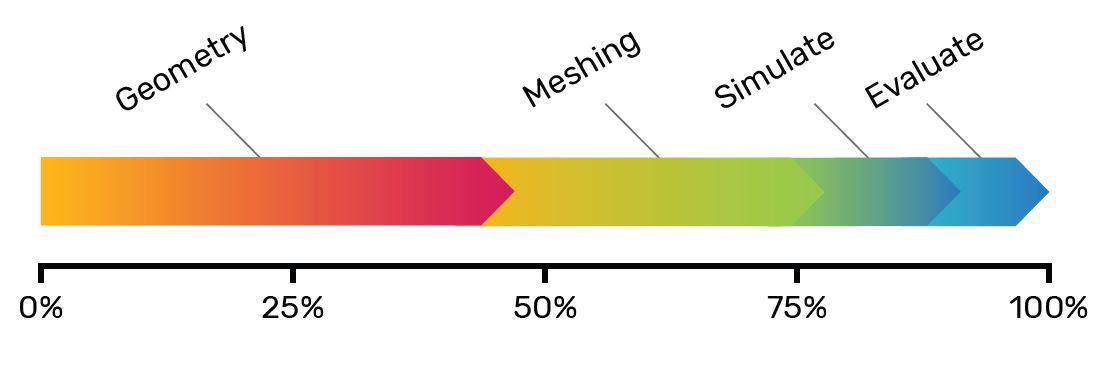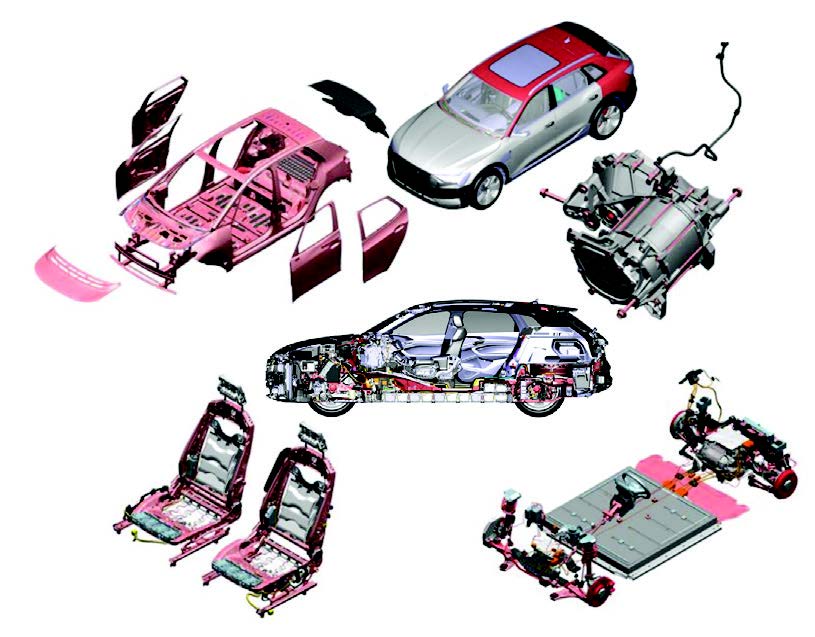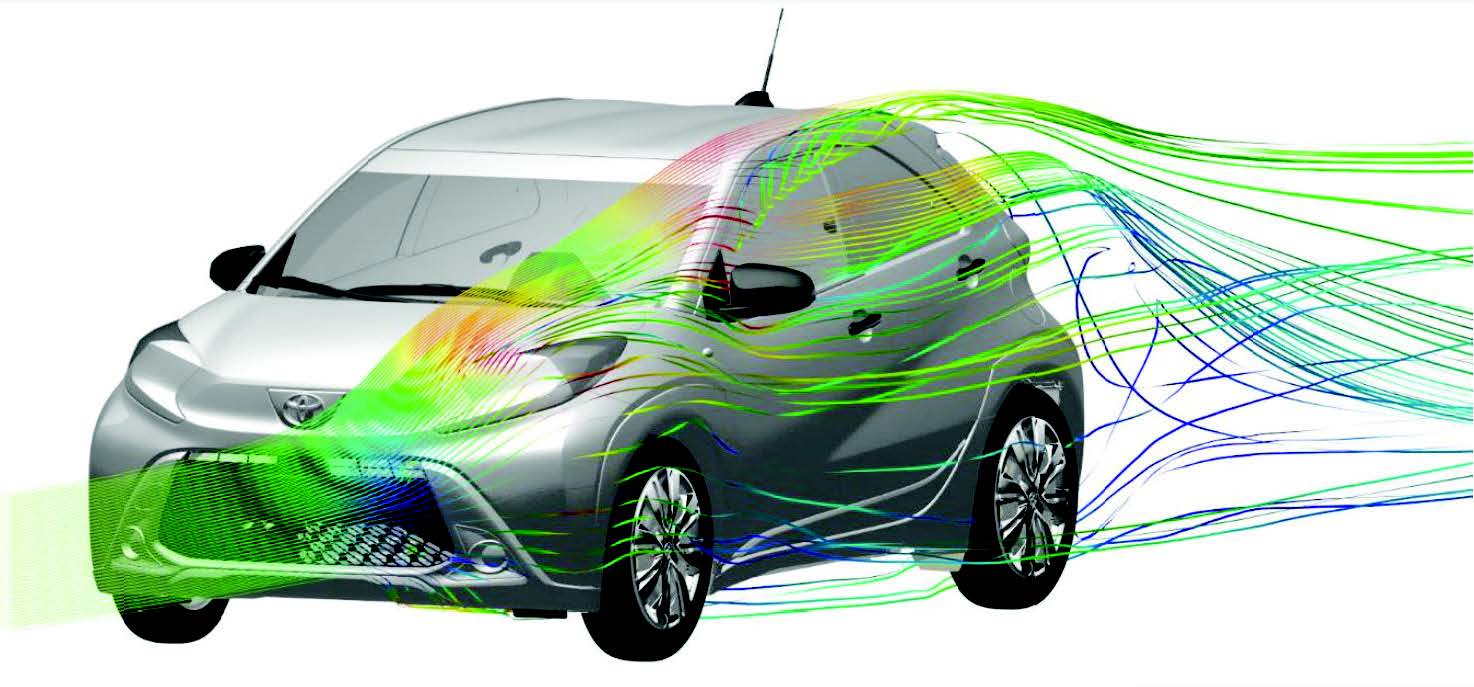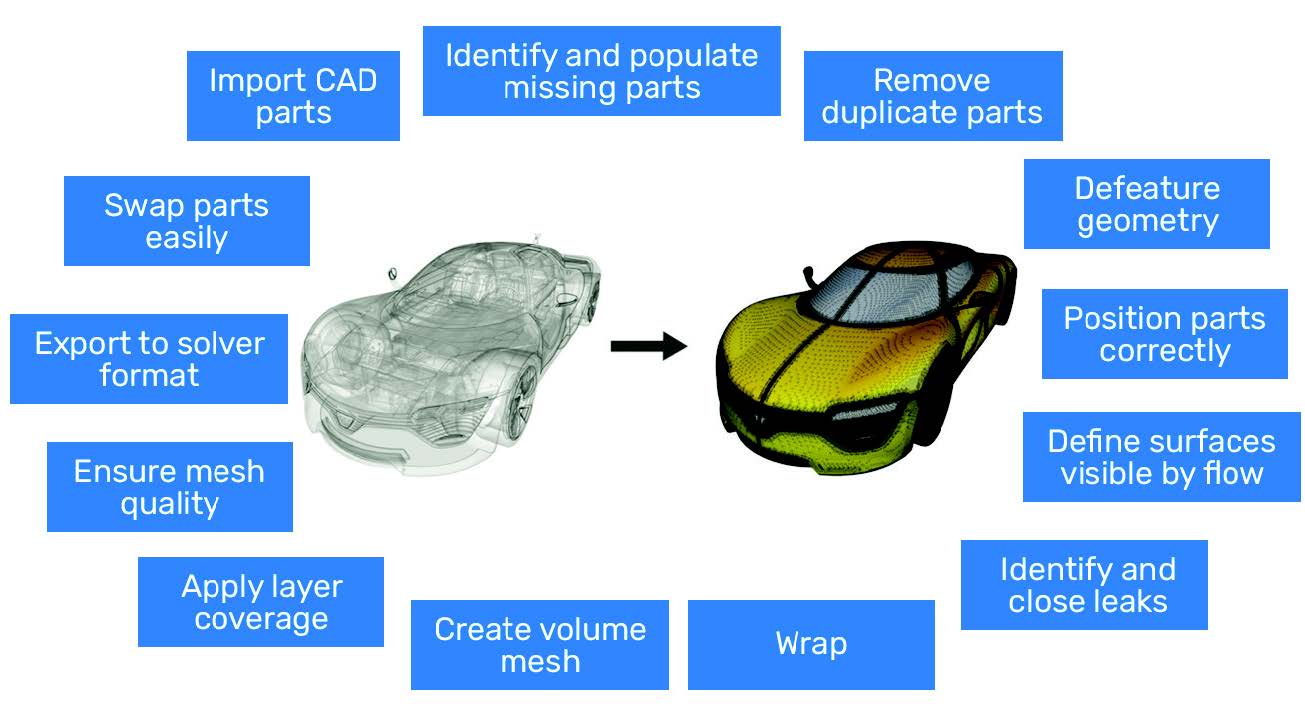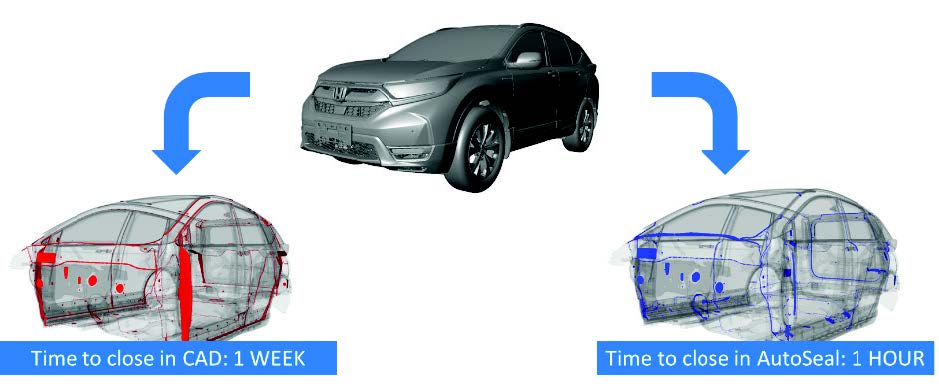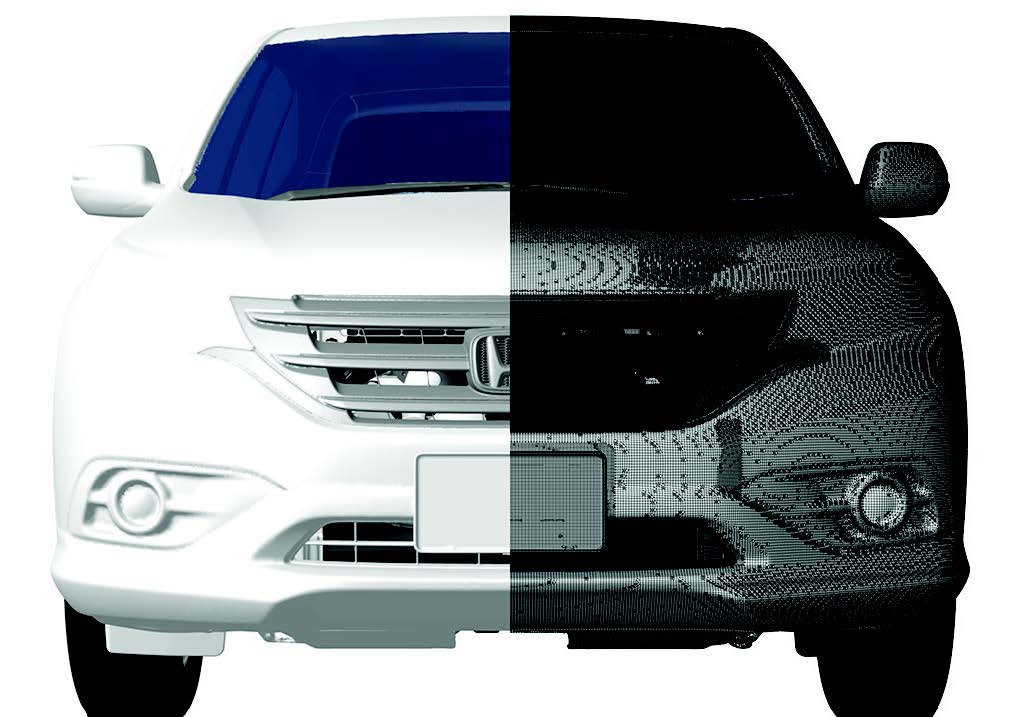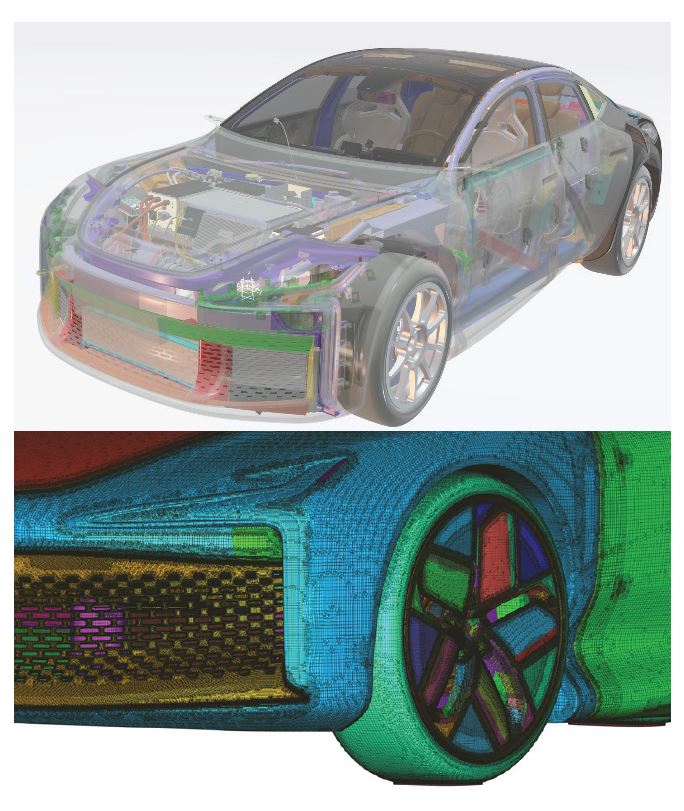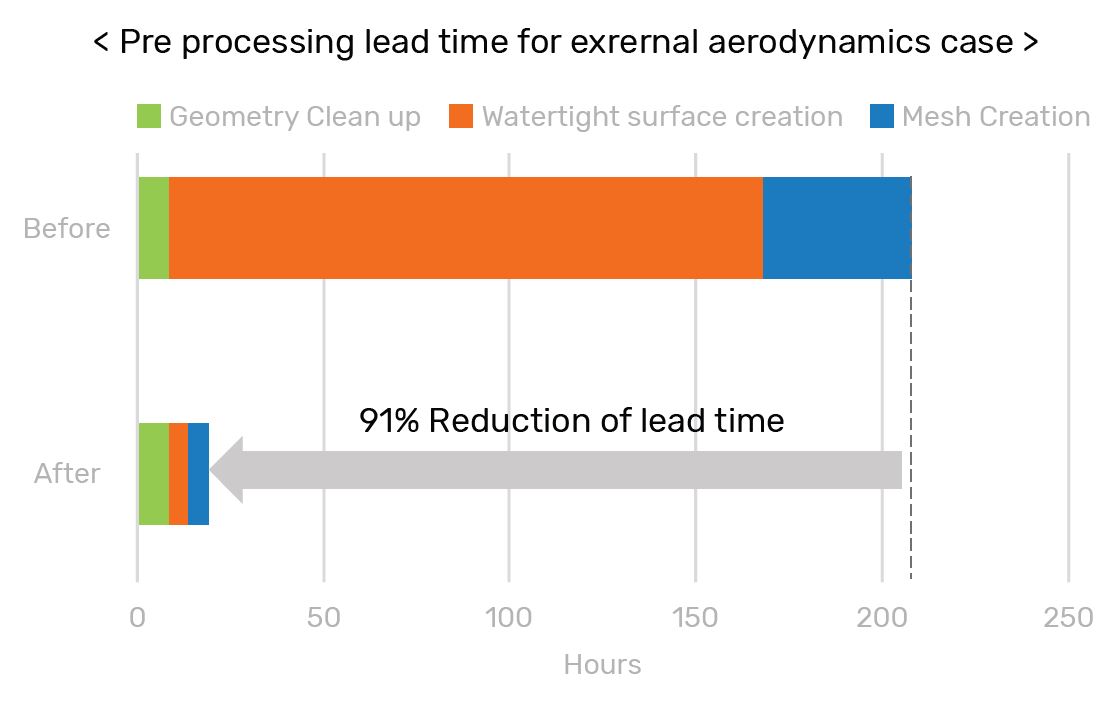Technical Brief
Fidelity CFD Accelerates Automotive CFD Workflow
Advanced Pre-Processing and Meshing Solutions
Overview
Introduction
CFD is used in today’s design processes to improve and increase the efficiency of products without relying on time-consuming and expensive physical testing.
Over the last decade, tools and methods have been constantly improved to increase productivity and reduce time to results. The latest revolution came from GPU-accelerated solvers, which deliver significantly more performance per dollar than traditional CPUs. Despite solver performance improvements, preprocessing continues to be one of the biggest challenges engineers face daily. Nearly 75% of CFD workflow efforts and time are spent on preprocessing (Fig. 1).
Automotive geometries are complex and very often need to be ‘cleaned.’ The engineers might need days or weeks to get the final mesh, iterating many times with geometry preparation and mesh generation tools.
With Cadence Fidelity CFD software, engineers can overcome this bottleneck and enhance traditional pre-processing workflows. Advanced automation and best practices reduce pre-processing and meshing time from days to hours and create high-fidelity meshes with 100% viscous layers coverage to achieve highly accurate results.
Fast and Versatile Simulation Workflows
An optimal computational fluid dynamics (CFD) workflow respects the following principles:
These are the principles that Cadence’s Fidelity CFD software products are based on.
Seamlessly Integrate and Customize Workflows
CAD workflows at automotive OEMs involve different CAD formats, customized PLM tree structures, and data organization. This calls for robust and flexible preprocessing capabilities so that it can be quickly adapted and implemented.
Similarly, the surface and mesh generation steps are often customer and application-specific with some commonalities. Fig. 4 lists the most common operations that must be performed in the pre-processing stage of every automotive OEM CFD workflow.
Fidelity workflow facilitates executing the above operations independently and seamlessly integrated into existing workflows. Cadence has been working with OEMs worldwide to improve existing workflows with significant CAD-to-CFD performance improvements driven by automation of various operations. Several innovative algorithms and workflow automation capabilities have been developed and incorporated through Python API.
Fidelity CFD Workflow
Poor-quality CAD or highly complex geometries require lengthy preparation and set-up times and much manual input for a high-quality mesh. A laborious task, especially when various design alternatives need to be analyzed or design of experiments (DoE).
CAD Import and Cleaning
CAD data typically contain information that is not relevant to the simulation task at hand. Removing unnecessary data is often a manual task that consumes large amounts of time. The Fidelity CFD platform provides fully scriptable automation for all import and cleaning steps, from geometry import, geometry defeaturing, and removal of duplicates to the correct positioning of parts. Handle the most complex geometries in all common file formats (STL, IGES, JT, PLM XML, STEP, CATPART, etc.) with tens of GB of disk space and shorten cumbersome import and cleaning from days to hours.
Model Preparation
Accurately predicting external aerodynamics, air conditioning, or thermal management of vehicles requires detailed geometries and model preparation with many CAD components or assemblies. The main difficulties are often (i) identifying all relevant surfaces that are ‘visible’ to the flow and (ii) creating a watertight model required for volume mesh generation.
Fidelity automates the entire sealing process without losing any geometry detail by automatically detecting ‘wetted’ surfaces and sealing the geometry by closing gaps and holes with Fidelity AutoSeal. Even the most complex geometry can now be processed without simplifying the underlying CAD (Fig. 5). The overall processing time can be reduced from several days to hours.
Here is how it works: AutoSeal can detect which cells of a dirty geometry are inside or outside of it. This allows the system to identify missing surfaces under a user-defined threshold progressively. AutoSeal then automatically closes the detected holes and cavities with newly created surfaces. Note that based on this approach, the original geometry is preserved and neither wrapped, simplified, or modified in any way before meshing.
The Fidelity CFD platform provides a streamlined, automated workflow for high-quality surface mesh generation as the basis for volume mesh generation.
Where a skilled engineer typically needed one full week to close all the holes of the cabin space before, now this whole process is brought down to just about one hour with AutoSeal.
Akio Takamura, Chief Engineer, Honda Automotive
Meshing
The Fidelity CFD software family offers a wide range of meshing options for the automotive industry (Fig. 7), e.g., full hexahedral meshes with hanging nodes or mixed element conformal meshes. Fidelity Hexpress provides automated volume mesh generation features, including:
Meshing tools cover a wide range of simulation cases. Fidelity Hexpress enables quick and hands-off mesh generation, while Fidelity Pointwise offers more manual control over surface and volume grids.
Hopium
Export and Automation
Fidelity’s Python API provides access to all features available in the Fidelity GUI, enabling automation of the CAD cleanup, repair, and meshing workflow through Python scripting for headless operation.
Fidelity includes mesh optimization and export for all major commercial and open-source-based CFD solver formats.
Performance Impact on Automotive CFD Workflow
Fidelity dramatically impacts pre-processing and meshing workflows across the automotive industry (Fig. 8 and Fig. 9).
| OEM type | Geometry size (GB) | File type(s) | Without Fidelity workflow TAT | Fidelity workflow TAT | % reduction |
|---|---|---|---|---|---|
| Car maker 1 | 23 | Iges | 15 days | 4.25h | -96.5% |
| Car maker 2 | 2 | STL | 7 days | 5.5h | -90.2% |
| Car maker 3 | 0.6 | Iges/Step/Nas | 5 days | 4.8h | -88.0% |
| Car maker 4 | 1.6 | Step/Parasolid | 15 days | 6h | -95.0% |
| Car maker 5 | 6.1 | Step | 20 days | 6.2h | -96.1% |
